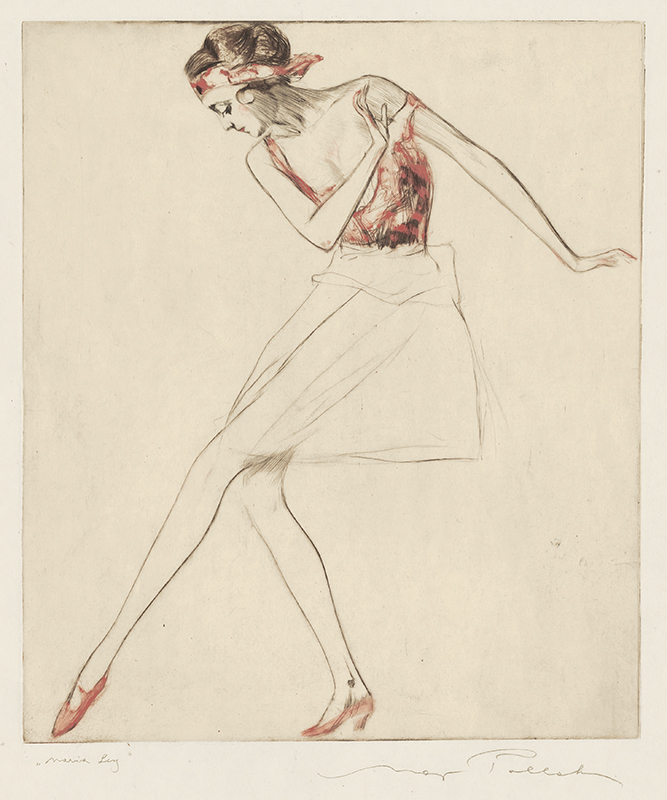
19th, 20th & 21st Century Fine Prints
707-546-7352 · fax 707-546-7924 · web: www.annexgalleries.com · email: artannex@aol.com
Dancers: Maria Ley by Max Pollak

Dancers: Maria Ley
Max Pollak
Dancers: Maria Ley
Max Pollak
1886 - 1970 (biography)While in Austria Max Pollak was part of the avant-garde dance scene. He did a series of intaglio portraits of dancers, usually costumed and posed, from one of their noted performances. Pollak depicts the Austrian dancer Maria Ley-Piscator (1898 - 1999), dancer, actor, theater director, and choreographer who fled Europe with her husband, actor Erwin Piscator in 1939. In New York they founded the Dramatic Workshop at the New School for Social Research, eventually coaching Marlon Brando, Harry Belafonte, and many other famed actors. Here she is shown as a chorus girl, likely in Berlin in the mid 1920s.
Friederike Czada, or Maria Ley as she would become known to the public, was the daughter of a Hungarian architect and an Austrian concert pianist. She was educated as a solo dancer and internationally successful in the twenties. Later she worked as a choreographer.
Her first husband Robert Bauer disappeared without a trace in the twenties. Her second husband was AEG heir Frank Deutsch, who committed suicide in Paris after Hitler came to power.
In 1937 she married for the third time. Her husband was director Erwin Piscator, with whom she left for the United States in 1939. Together they managed a drama school, the Dramatic Workshop at the New York School of Social Research.
After the Second World War Robert Bauer suddenly turned up. He had been involved in criminal business practices and had been a prisoner in Prague and Vienna and even survived concentration camp Auschwitz. He had been such a terrific bridge player that the camp commanders couldn't do without him.
In 1951 Piscator had to leave the U.S. for Germany because of his communist views. Madame Piscator, as she was known for the rest of her life, continued the school in New York. Every now and then she visited Berlin to see Piscator's new productions, but usually she returned quickly to the United States. After Piscator's death in 1966 she led the Piscator Foundation in New York.


